Our Milk and Honey Sourdough Sandwich Bread recipe makes a lovely loaf of sliceable bread with a soft tender crumb. Perfect for sandwiches, paninis and toast this recipe is formed in loaf pans for a dense crumb that will hold together.
If you prefer the traditional sourdough boule with an open crumb and crunchy crust, we have instructions for both in this post. This is a beautiful bread that can be enjoyed any way you prefer. With the addition of good quality honey, warm milk, eggs and warm butter this sourdough loaf has a sweeter flavor profile that everyone raves about.
Sourdough baking can be an intimidating feat for many, but in this post we walk you through all of the steps in a clear and concise way so that you are successful in baking your own sourdough bread.
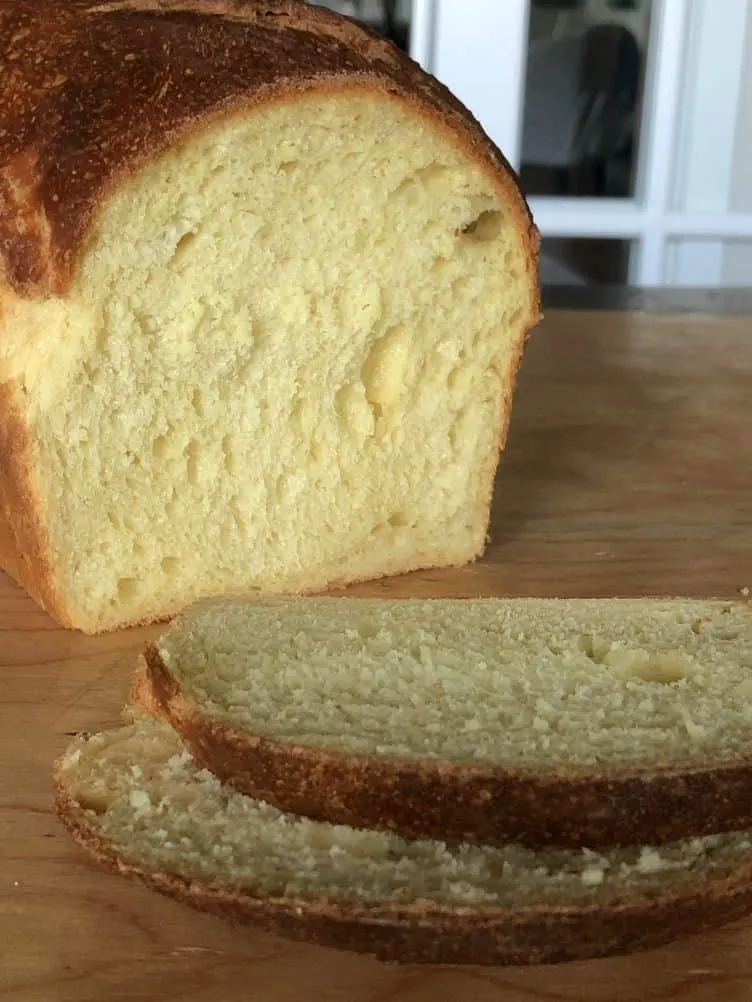
Beginner Artisan Sourdough Bread Recipe
We made this Video (see sidebar) To help you see the entire process with all the steps involved. This video is our Homemade Food Junkie sourdough tutorial on the Beginner Artisan Sourdough Bread Recipe .
It will show you how to make sourdough bread in this recipe too. The long cold rise method and no knead stretch and fold sourdough bread recipes are all similar techniques. Once you master one of these sourdough recipes the others will be a snap.
This Milk and Honey Sourdough Sandwich bread recipe is Sasha Hunter’s creation. She has worked in bread many years (Sourdough for the last three years) and is an amazing bread baker. Follow Sasha on Instagram and Facebook to see her work and read her bio further on in our post.
What does adding milk and honey do to Sourdough Bread?
All sourdough bakers know that traditional sourdough is a very basic recipe consisting of your active starter, water, flour and salt. So what happens when you add additional ingredients such as honey or milk?
When you add milk to a sourdough bread recipe it will give the the loaf a softer crust that is perfect for sandwich style slices. It will also cause the crust to darken more than usual due to the caramelizing lactose sugars. Milk introduces fat to the recipe, as well as more sugars.
When honey is added to a sourdough loaf the most noticeable difference will be in the flavor. Honey will of course reduce the sour flavor that is prominent in sourdough breads, as well as adding a slightly sweet profile. Honey will also reduce the bulk ferment time that is needed, as well as aiding in a softer crumb.
Is Sourdough Bread really good for your digestion?
Studies have been done that show sourdough bread acts as a prebiotic, this means that the bread helps feed good bacteria in your guts. We all need good bacteria for a healthy and stable digestive system and sourdough bread can help with that. The natural yeast is beneficial and the no fuss recipes keep it simple and straightforward with good clean ingredients.
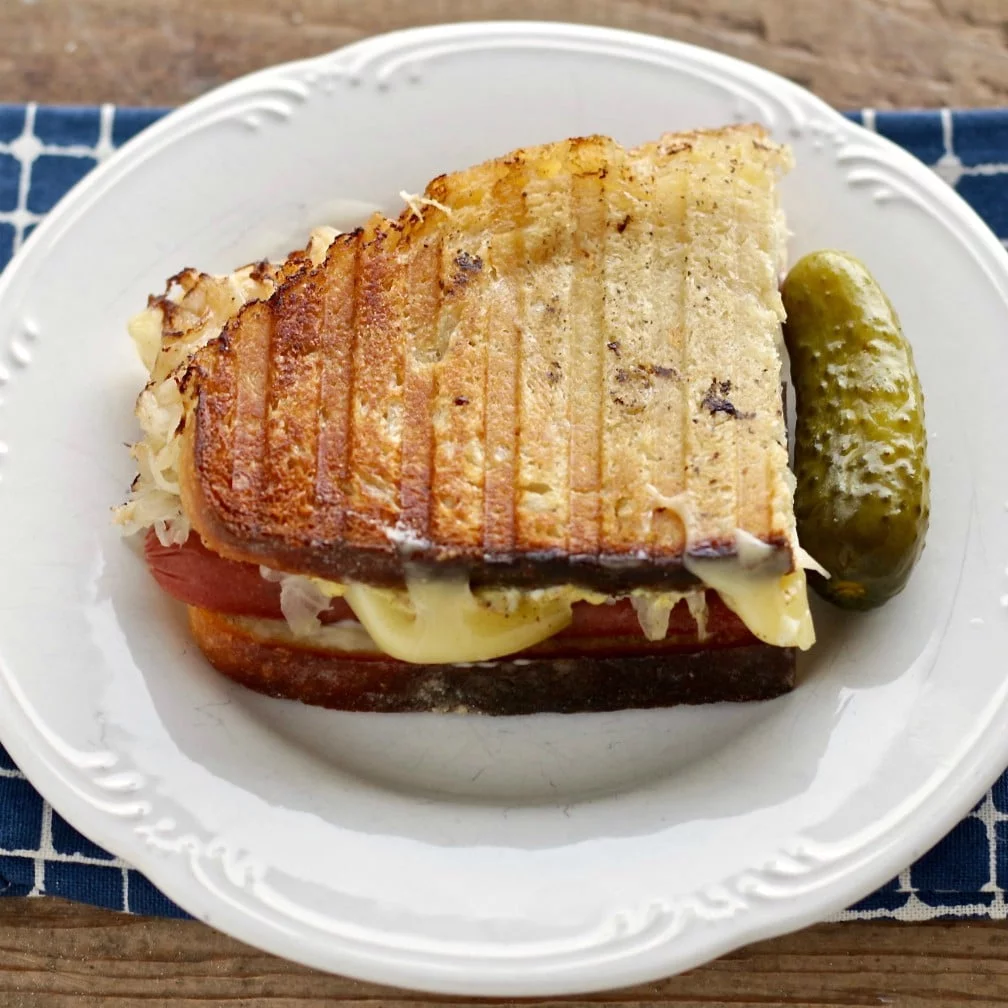
This recipe makes a beautiful hot sandwich, a classic PB&J, or a scrumptious slice of avocado toast.
Helpful tips For the Milk and Honey Sourdough Sandwich Bread
- Keep the recipe proportions correct and follow all the processes in order every time. Yes you can fudge the rising times a bit but do this as a matter of experiment once you learn the recipe as it is written.
- Make sure your starter is active and ready to bake bread. I’m using this 100 percent hydration sourdough bread starter.
- Hot temps will easily over proof a loaf. Learn to watch the dough and be careful of overproofing.
- This recipe freezes well at least two weeks. The loaves defrost beautifully and make great toast and sandwich bread.
Testing your starter
Is your starter doubling every five to 12 hours after feeding? If not, even if it looks active and passes the float test it may lose strength before your bread is baked.
The Float test. Drop a teaspoonful of starter into a cup of water and see if it floats. It should pop up to the top of the water in a nice solid mass with good spring and life.
For best results for any sourdough bread baking recipe keep feeding your starter until it is very active (it should bubble and talk to you a bit). If it floats up on top of the water you drop it into in a bouncy solid mass and stays there a while (several minutes) without dissolving you are ready to bake.
If it sort of barely lifts off the bottom and spreads out or is not all together at the surface… keep feeding it. Your starter is still too hungry and weak to work well.
What flour is best for Sourdough?
A high protein flour like Montana Wheat Flour, King Arthur Flour or Central Milling Flours. Organic and non GMO contribute greatly to good bread! The important thing is that your flour protein content should be around 12% less than that and you may not yield a strong load with good structure. The protein content is also critical for feeding your starter, if your flour does not give your starter enough protein to eat, it will essentially starve and die.
The addition of enzyme boosters such as rye flour are very helpful to feed your starter as a little treat every now and then. You will see a noticeable boost in the life of your starter.

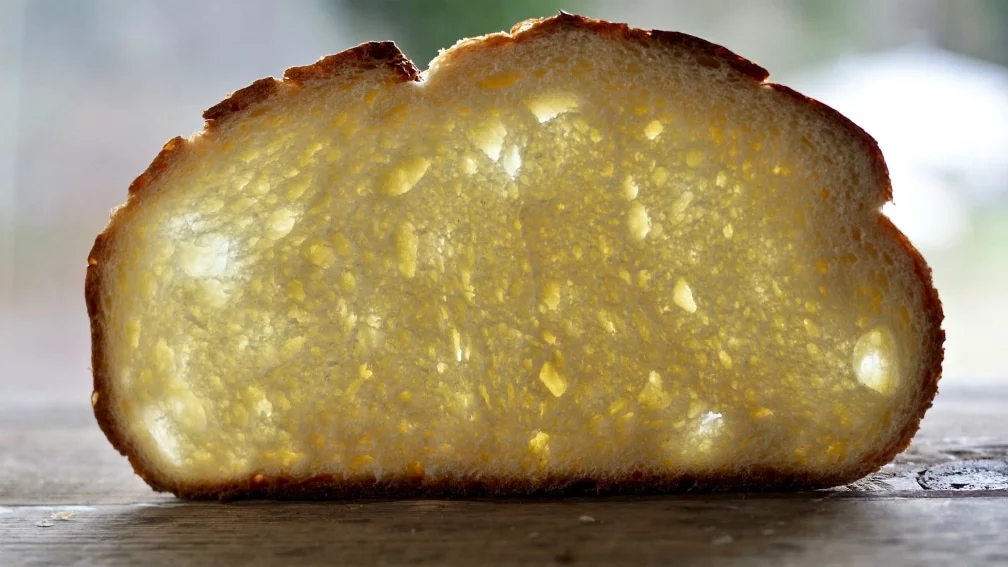

Creating the crumb structure
- You actually have complete control over this aspect. By completely degassing the dough before shaping you can achieve a very even, and closed structured crumb making it the perfect sandwich bread.
- On the flip side, you can create an open and lofty structure by handling the dough very gently when shaping and only degassing what’s absolutely necessary.
- Hydration (total liquid content) and protein content (which affects gluten development and elasticity, i.e. the bread’s ability to hold its gas bubbles) will greatly affect your results as well.
- Don’t expect to obtain equal results with all purpose flour if a recipe calls for bread flour. It’s all about protein content. By paying attention to these aspects you can easily manipulate your loaves without changing your recipe.
- This recipe also makes a beautiful pan loaf, which I fully de-gass (with a rolling pin) before shaping. Rise time will increase, but that always varies. Learning to judge your doughs in the fermentation process as well as final rise period comes with practice.
In short, bread can be a wonderful stand alone food but it needs to serve as a vehicle for whatever deliciousness we are placing upon it!
Why is my Milk and Honey Sourdough Loaf so dark?
This recipe is heavily enriched with honey, milk, & butter. These three items all have sugars that will caramelize beautifully and create a soft texture, but have great potential to go past the point of appealing, and may very well burn if you don’t keep an eye on it.
Leave the sheet pan below, remove the lid of your Dutch oven and let the loaf bake until you achieve the desired exterior color.
If you find your loaf is browning too quickly, place a piece of tin foil over the loaf loosely. This will act as a shield and allow your loaf to finish baking without scorching.
Keep in mind that contact with the bottom of the dutch oven for longer than 30 minutes will increase bottom scorching risk. So be careful if your bake time exceeds this time frame too much.
NOTE: My oven is hot and does tend to darken the crust a bit no matter what I do to compensate for that. I made this latest loaf with all of Sasha’s instructions but it did darken more than hers does. But it is a soft crust and very delicious in sandwiches.
SCORING TIP: slash your loaf assertively down the center and end to end. Optionally, slash the “leaf” pattern on either side of the center slash. This will give the loaf room to expand in a controlled and beautiful way so as to avoid it exploding or rising over the edges of the pans too much.
Milk & Honey Sourdough Sandwich Bread
-By Sasha Hunter
Yield: 2 large loaves (reduce by 50% for 1)
Complete nutritional information and sourdough bread calories are included in our printable recipe card below.
Your Printable Recipe Card:
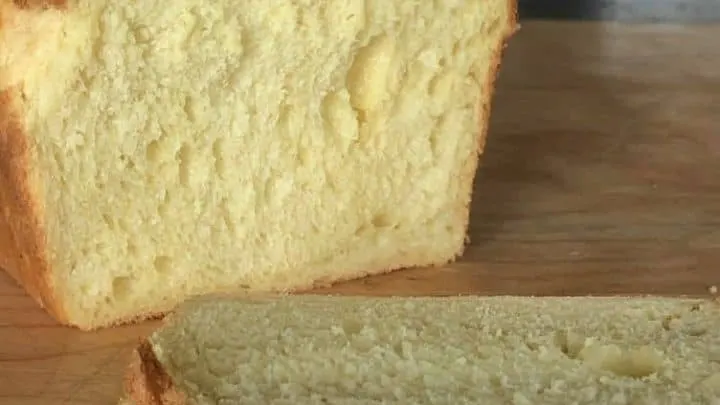
Milk & Honey Sourdough Sandwich Bread
A reliable, flexible recipe for a lovely sourdough sandwich bread using the dutch oven, stretch and fold and long cold rise methods. This bread slices well, makes excellent toast, paninis and sandwiches.
Ingredients
- 300 grams Starter (2 Cups)
- 250 grams water (1 Cup)
- 380 grams Whole Milk-warmed (1 1/2 Cups)
- 180 grams Eggs (4 large eggs)
- 60 grams or Butter-melted (1/4 Cup)
- 100 grams Honey (1/3 Cup)
- 1100 grams bread Flour (8 Cups)
- 20 grams natural sea salt (1 1/2 Tablespoon)
Instructions
DOUGH BUILD:
- Weigh out starter into a large bowl.
- Add water and mix until it turns into cloudy murky water.
- Add Milk, Eggs, Butter, and Honey and mix. (I mix them together and warm them all to about 80 degrees in my microwave)
- Add flour and mix with your hands(or a dough spatula) until the dough comes together.
AUTOLYSE
- Rest the dough without stretching for 30 to 60 minutes:
- Add salt, work in with wet hands using a pinching action. Drive the salt into the dough with your fingers rather than try to mix it in or roll it.
- Cover. Rest 30 minutes.
STRETCH AND FOLDS:
- Pull the dough gently but firmly from the back of the bowl up and over to the front. Turn the bowl 1/4 Turn and repeat. Do this until you have stretched the dough and folded it over on all four sides.
- Rest the dough covered, 30 minutes at room temperature(about 70 degrees). (I set a timer)
- Repeat the stretch and fold process four times 30 minutes apart. You are building the gluten in the dough in this stage. As you repeat the stretch and folds the dough will change from a gloppy mess to an elastic resilient dough.
RAISING THE DOUGH:
- Let the dough sit and bulk ferment (raise) for 1 hour at room temperature.
- Put the bowl into A plastic(grocery) bag and set in the refrigerator to finish cold fermentation for 24 hours. ***see notes at page bottom
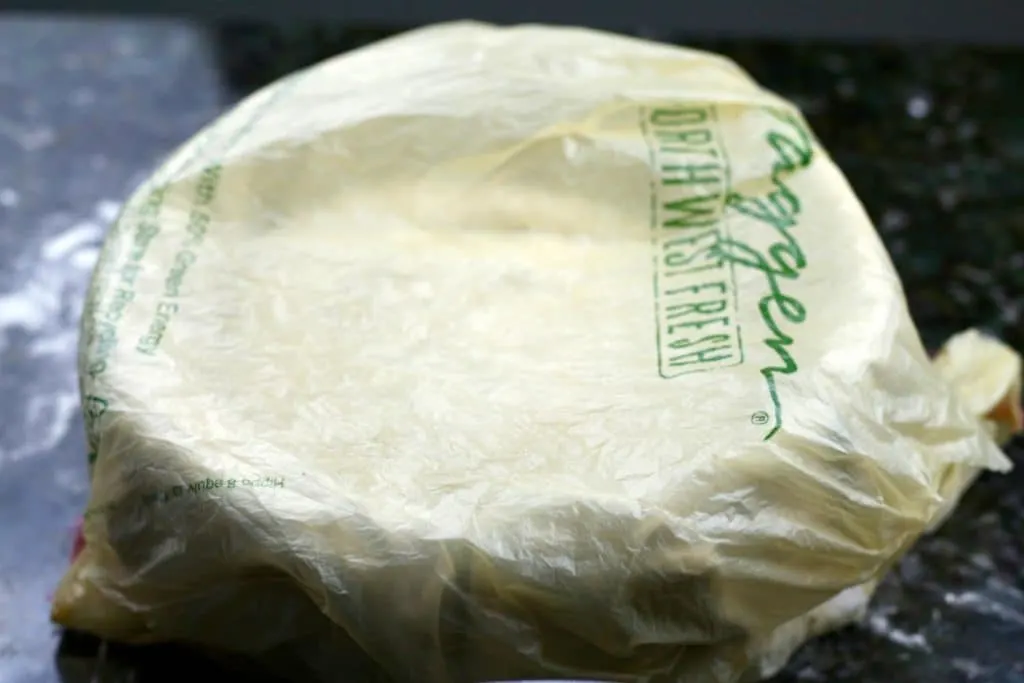
NEXT DAY:
- Remove Dough from the refrigerator and turn out onto a floured board.
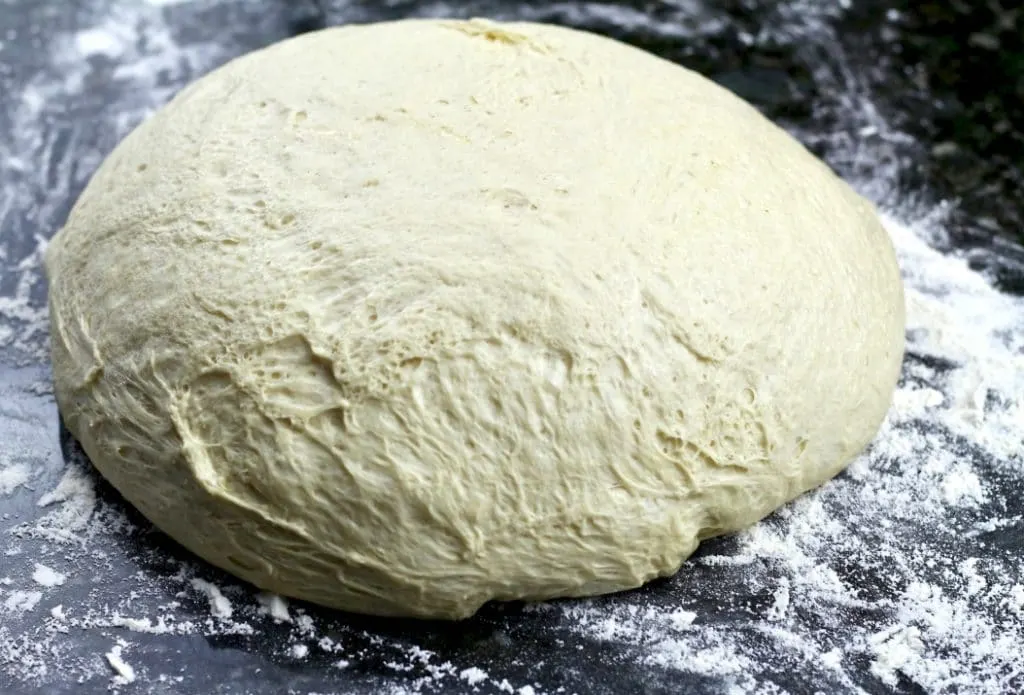
- Divide (by weight for even size) into two dough balls. Gently shape into two rounds, cover and let rest until dough comes to room temperature and is pliable. 30 to 60 minutes.
- Shape and gently place into bannetons or pans (seam side up) to rise at room temperature until raised 20 to 30 percent.
- Chill in refrigerator before baking two hours to cold proof in the plastic bag again. (this helps get a higher oven spring).
Baking Instructions for Boules in Dutch Oven:
- Preheat oven with Dutch oven inside to 450˚F for at least 30 minutes.
- Cut a piece of parchment paper large enough to accommodate your loaf. You'll use the paper as handles to lower your proofed loaf down into the very hot Dutch oven.
- Take the risen dough out of the refrigerator .
- Place the parchment round over the basket and carefully flip the whole thing over and un-mold the dough.
- Using a pastry brush, dust the loaf to remove excess flour.
- Score.
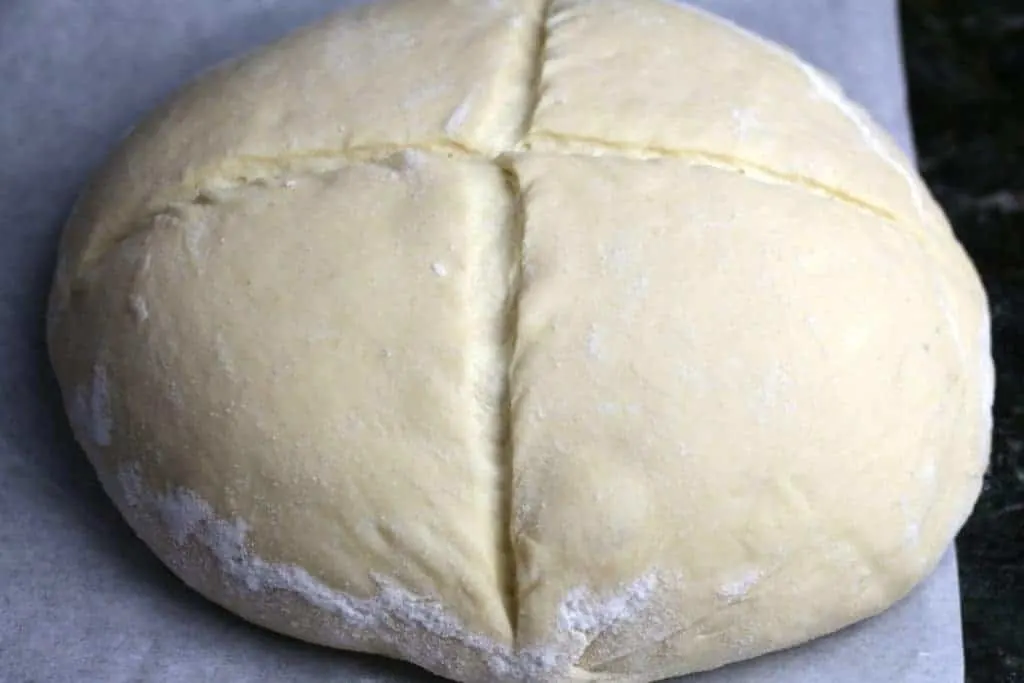
- Spritz liberally with water (for a blistered, flour free crust) or omit the spritz for a rustic looking loaf
- Carefully lower your loaf into the preheated Dutch oven and place the lid on and set into the oven.
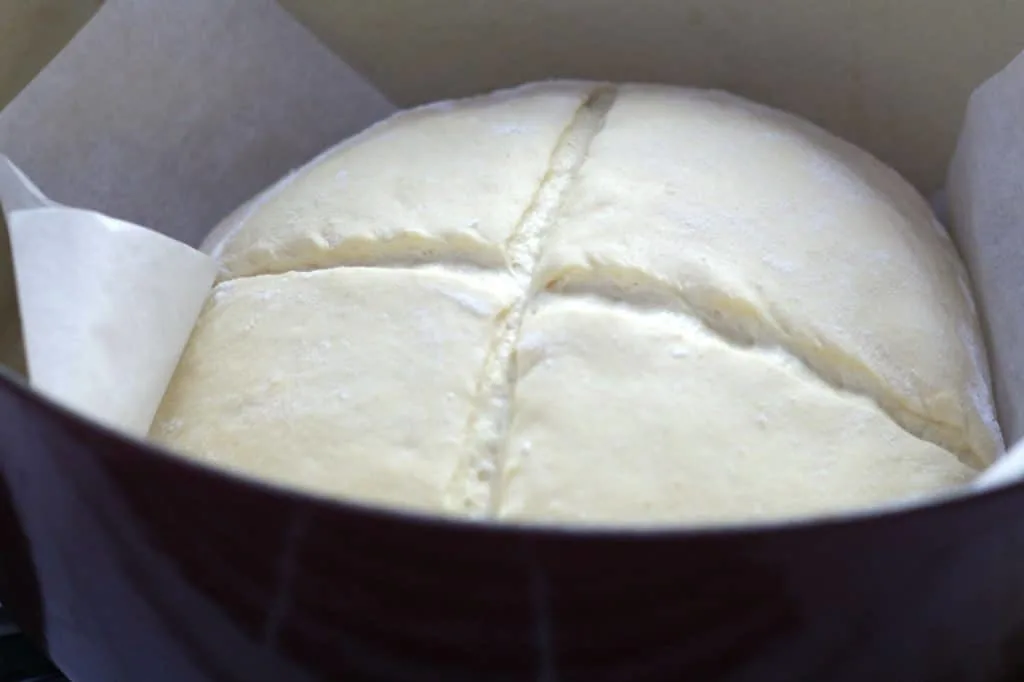
- Slide a sheet pan one rack below the Dutch oven to deflect excess heat from the bottom crust.
- Bake covered for 30 minutes at 450˚F. *(MY oven is so hot I bake the bread completely covered for 40 minutes on convection heat at 450 degrees and it comes out as pictured. Adjust these directions to your own oven)
- After 30 minutes, remove the Dutch oven from the oven. Carefully remove the par-baked loaf from the Dutch oven using the parchment paper as handles.
- Slide loaf back into the oven directly on the center rack.
- Spritz oven with water bottle.
- Bake for an additional 10-15 minutes until an internal temperature of 200˚F-205˚F is achieved.
- Remove from oven to a cooling rack.
- Let cool completely. To keep the soft crust store the loaf in a plastic bag at room temperature.
- Let the Dutch oven heat back up for a few minutes and start the process over again for the second loaf. Enjoy!
To Make bread Loaves:
- Instead of forming for boules after bench rest roll the dough out and degass it.
- Now form the dough into loaves for two 9 x 4.5 x 5 bread pans.
- OIL your bread pans and lay the dough in so it just touches the sides of the pan and the ends.
- Allow to rise covered in the bread pans two to four hours until the dough is level with the top of your bread pans.
- Set the loaves covered in the fridge.
- Preheat your oven to 400 degrees F.
- Set a pan of water on the bottom shelf of your oven. (I use a broiler pan half full of water).
- When the pan is steaming and the oven is preheated SCORE the loaves and set the loaf pans on a baking stone (or baking sheet) in the middle of your oven.
- Bake 15 minutes then reduce the heat to 375 degrees F and bake an additional 35 minutes.
- Check for doneness. Use a digital thermometer and push it into the end of your loaves to the center. It should read 210.
- Remove the loaves and let cool in the pans 5 to 10 minutes.
- Cut around the sides of your pan carefully to release the bread from the pan as needed.
- Cool on racks an hour until room temperature before cutting.
Notes
***Note: Seasonal temperatures greatly affect the speed at which dough ferments. Keep a watchful eye on its progress. Make sure not to over proof. Your dough may need to be shaped sooner than 24 hours depending upon activity.
The nutritional information on this recipe is going to change according to the flour and other ingredients you choose to use. If made as directed the slices size will also somewhat affect serving size. We usually eat one half of a slice of these large loaves and cut it down the middle for a sandwich. That means we are getting twice the servings noted in this recipe.
Nutrition Information
Yield
24Serving Size
1 Slice of breadAmount Per Serving Calories 216Total Fat 4gSaturated Fat 2gTrans Fat 0gUnsaturated Fat 2gCholesterol 35mgSodium 358mgCarbohydrates 37gNet Carbohydrates 0gFiber 1gSugar 4gSugar Alcohols 0gProtein 7g
Sasha’s Bio:
“I live in Central Washington state with my husband Nate, our 4 dogs, and 5 horses.
I’m a passionate baker and cook. I lean heavily toward the natural / organic lifestyle with balance for life’s pleasures of course! I enjoy sharing my creations with friends and bartering for farm fresh eggs, grass-fed meat, raw honey, ect.
I worked as a baker’s apprentice while going to school. Learned production baking and made everything from scratch donuts to wedding cakes. Worked as a cake decorator for a bit in local grocery stores.
My husband and I have a custom cabinetry and fine furniture business. I worked with him building our business for several years while producing numerous custom cakes for a range of clients (including one celebrity!…who I do not have permission to name, darn).
I have baked yeasted breads for years but I began my journey with sourdough in the summer of 2016. Bread was an area I was looking to “grow” in as well as improving what we were eating on a daily basis. The health benefits of sourdough were very intriguing to me, so I embarked on a hiatus from my cake business. I made my first sourdough starter following the King Arthur Flour instructions on their website. I began to create my first loaves of sourdough and was overjoyed with my results.
In the fall of 2016 I created another (APPLE JACK) starter by using the peels of apples grown on our farm. I created a yeast water with the apple peels and used that yeast water as the liquid component in my starter. This starter (I named him Apple Jack) has been very successful and is my preferred culture today. I use it in all of my sourdough creations, both sweet and savory.
You can purchase my Apple Jack Starter through my ETSY page at Sourdough Sentiment.
Sasha
I am no longer making custom cakes (except occasionally for friends/family). Currently I work on my ETSY shop baking sourdough bread while raising my family
I’m constantly developing new recipes, and keep a sourdough journal to log all of my bakes. We are expecting our second child in March. 🙂
It delights me to know that I have the ability to provide my family with wholesome food and self sustaining skills. I hope to build an outdoor wood-fired oven in my next adventures (for pizza and breads).
I’m working toward my dream of authoring baking books one day.
Education-BFA in Fine Art: Concentration Painting & Drawing from Central Washington University Graduated 2010
Follow Us:
We enjoy meeting you on our social networks. Follow us on Facebook, Pinterest, Instagram . Tag us with your pictures of our recipes and comment on how it went for you. We would love to see what you do with them.
We often like, comment and share your posts of our recipes on our daily Instagram stories.
Ask questions and rate the recipe in the comments section below. Please share what you did with this recipe. We are always looking for more and better ways to make homemade food. Other cooks love your ideas!
Recent Posts:
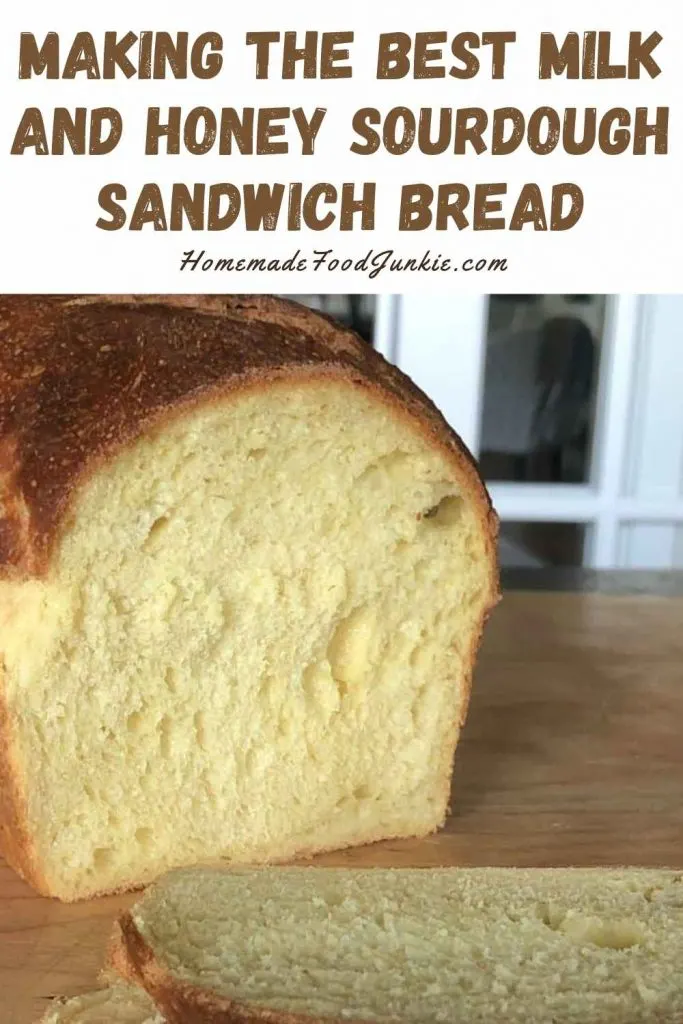

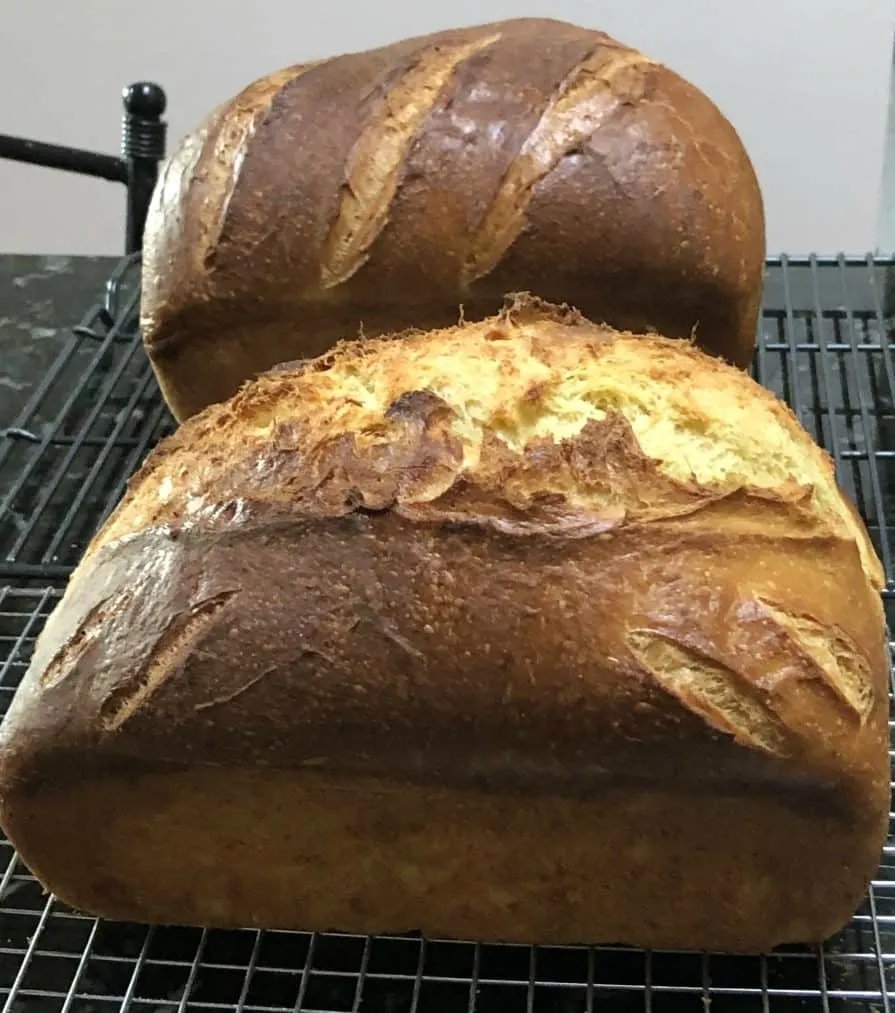
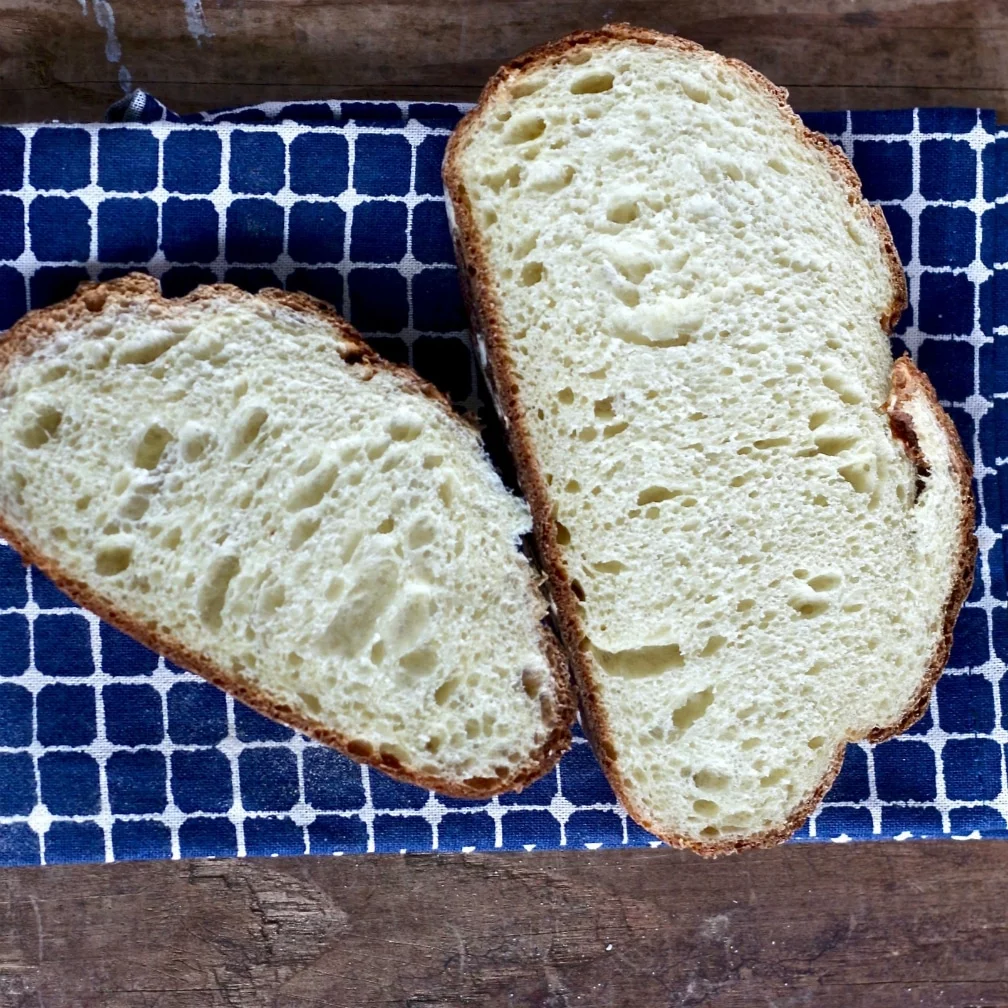
Jacqueline Thompson
Tuesday 16th of December 2025
Hi, if I only want one load can I halve the recipe or do I need to do something else for it to turn out?
Jacqueline Thompson
Thursday 18th of December 2025
@Diane, Thank you very much. Can't wait to make this:)
Diane
Tuesday 16th of December 2025
Hi Jacqueline, Yes, this recipe should work great if you halve the ingredients. It will still make one good sized loaf or boule. Happy holidays!
Hannah H
Monday 1st of September 2025
Hello! First off, thank you for this recipe- it’s delicious!! I’m relatively new to making bread and it’s been a huge hit in our home. It’s so nice having fresh bread with simple ingredients. I wanted to ask two questions: what do you think the minimum time in the fridge would be, if I’m in a hurry? Also, two batches have had a slightly gummy bottom, but great crumb/flavor. I typically wait two hours before cutting into it, so I think it’s the proof. I’m usually afraid I’m going to overproof, so I tend to skip the 2 hour rise after it’s been in the fridge. I also realized I wasn’t degassing much for loafs. Any suggestions? Thank you again!
Diane
Monday 1st of September 2025
Hi Hannah, Im so happy you're enjoying this bread recipe. I just recently made it again. It's such a nice dough to work with and makes a lovely, easy to handle dough. It also makes great cinnamon rolls if you're interested. Just us e this dough and follow the instructions in this recipe for the rolls. To answer your questions: 1: The longer your dough is in the fridge, the better for dough development and flavor building. That said, you can reduce the fridge time to whatever your needs require. I'd give the dough at least 8 hours in the fridge (overnight) if you can.
If you plan to actually eliminate the long cold rise, you can rise the dough on the counter. Since this is a large dough batch, I'd split the dough into equal parts and bulk rise it for several hours(at least 4 hours or until the dough is 1/3 to double in size) instead of fridge time. Then go immediately into your bench rest and forming stage. The chill in the fridge can also be eliminated if you want to really speed things up. Just allow your dough to rise in the bread pans and then go straight to bake. Cutting corners like this should not affect the bake too much. You just won't get the best dough development.
Alternately, if your fridge time needs adjusting you can also go longer and the dough will be fine for up to 36 hours. This allows you the freedom to set your schedule and accommodate life as it happens. :)
2: The gumminess is likely using a bit too much oil in the pan when baking AND/OR spraying the loaves with too much water before or during the bake, or butter on the dough top if your doing that. Basically too much moisture for the dough to absorb while it bakes. Try cutting back a bit on that and see if that helps. Also be sure to get the bread out of the pans right after the bake. Otherwise sitting in the pans while cooling can also trap moisture into the bread bottom. Cooling loaves need to breathe.
3: Skipping the rise will give you a denser loaf but with the proper precautions about extra moisture you should be ok skipping the final rise if you are getting good results. Just make sure the loaf is completely baked to 200 degrees F in the middle of the loaf before removing to a cooling rack.
4: Degassing the dough is optional. You will want to do that if you're interested in a fine crumb for sandwiches. If your family enjoys bread with an open crumb, make this recipe in a dutch oven (follow the instructions for artisan bread here). Degassing will make a better sandwich loaf with a nice fine crumb.
Finally, over proofing is much more likely to happen with counter rising. The long cold rise in the fridge is a much safer way to rise your dough if you can find the time. Hopefully you have a mature, well balanced starter. It sounds like you must since you're getting great results. So don't stress too much about the over proof. I think you're doing great! Happy baking!
RJ
Sunday 25th of August 2024
Phenomenal recipe, thank you! I prefer sourdough that is soft and baked off in loaf pans. I found it very interesting that the loaf I scored with a smile just off center down the length baked off much better than the one with three horizontal scores. Even though both pans were weighed out with the same amount of dough, cooked at the same time, and remove from the oven when they tested at 210° f, the loaf with the scoring down the length is perfectly golden brown and developed a lovely ear in the oven. The loaf with three horizontal scores did not brown on the sides, and the sides caved, indicating the hydration was too high for that loaf. Again, one of the best recipes I have ever used. I greatly appreciated the level of detail.
Natalie
Tuesday 9th of April 2024
I absolutely LOVE this recipe. It consistently gives me the most beautiful, delicious loaf. I’m wondering if you’ve tried inclusions with this recipe? My 16 year old daughter loves the roasted garlic, Parmesan, and rosemary loaves I’ve tried but they come out so much heavier and dense than this recipe. Any thoughts? Kudos for a fantastic recipe!
Diane
Tuesday 9th of April 2024
Hi Natalie, We are happy you love this recipe! I have never done inclusions on this recipe but they will probably work well. Try adding half of them after the 2nd stretch and fold. And the rest at the third. By the fourth stretch and fold they should be mixed in pretty well. We do have several breads that do inclusions like cheesy Jalapeño bread and roasted garlic rosemary sourdough bread. And a wonderful cinnamon raisin bread here.. They all include good instructions on the process for you. Happy Baking!
Samm Bradford
Monday 1st of April 2024
hi there , i found this recipe online and just mixed my dough up . i’ve been making a yeasted milk sandwich bread that my family loves and i couldn’t wait to try this . i halved everything as we are a small family and i don’t like to freeze anything we like it fresh but my dough was a wet sticky mess it didn’t look right so i sprinkled more flour until it was workable . it’s still a little sticky but i’m hoping it comes out right . i know it’s humid here in wv and i’m not sure if that’s why but i wish i was more skilled to know how much more flour to add when this happens.
Diane
Monday 1st of April 2024
Hi Samm, This is a pretty good dough to work with usually. However it is a bit sticky, when I work with sourdough dough I wet my hands and tools and the dough slides right off as I stretch it and go through the processes (watch my videos on how I make the dough here). This is very different than yeasted breads that you may be used to but I find it works better for me than adding more flour. That Said: Using flour should be done carefully as it will dry the dough out if you use too much and that will give you a heavy dense loaf when baked. After you make this recipe a time or two you will get more used to it and how it reacts best in your climate. I'm on the west coast and it's definitely different here. I hope this helps you. Happy Baking!